Nicosia, the divided capital of Cyprus, is a city that bears the scars of a tumultuous past. Separated since 1974 by a United Nations buffer zone, this historic city showcases a rich tapestry of cultural influences, from the Ottoman to the Venetian and Lusignan eras. Visitors can traverse the infamous Ledra Street border crossing, where the realities of this partition are palpable, and experience the resilience and spirit of the diverse communities that call Nicosia home. Delving deeper into this captivating city uncovers a story of division, but also one of perseverance and the enduring power of human connection.
Key Points
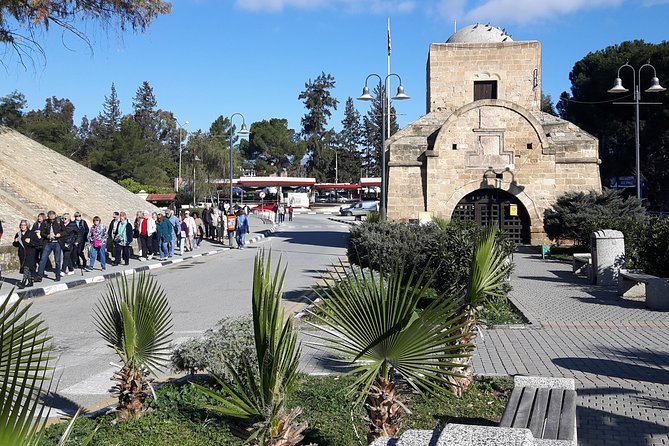
- Nicosia, the capital of Cyprus, has been divided since 1974 into Greek Cypriot south and Turkish Cypriot north by a United Nations buffer zone.
- The Ledra Street border crossing serves as a gateway between the two halves of the city, monitored by UN peacekeepers.
- Nicosia’s architectural heritage reflects the influence of Ottoman, Venetian, and Lusignan eras, creating a diverse cultural tapestry.
- Guided tours offer a comprehensive exploration of Nicosia’s history and cultural heritage, with transportation and refreshments provided.
- The division of Nicosia represents the ongoing separation between the Greek Cypriot and Turkish Cypriot communities, providing an opportunity to engage with the city’s complex dynamics.
Exploring Nicosia’s Divided History

Nicosia, the capital city of Cyprus, is a unique and captivating destination that reflects the island’s complex and often turbulent history.
Divided since 1974 by a United Nations buffer zone, the city’s two halves – the Greek Cypriot south and the Turkish Cypriot north – offer visitors a fascinating glimpse into the island’s cultural, political, and architectural diversity.
Exploring this divided city is like stepping back in time, as the two sides have evolved independently, preserving distinct identities and traditions.
From the medieval Venetian walls and the vibrant Ledra Street in the south, to the mosques and Ottoman-era landmarks in the north, Nicosia’s duality is a testament to Cyprus’ turbulent past and its ongoing search for reconciliation.
You can also read our reviews of more tours and experiences in Nicosia.
Ledra Street Border Crossing

As visitors cross the Ledra Street border checkpoint, they find themselves navigating a unique in-between space, where the division of Nicosia is made strikingly apparent.
This checkpoint, situated along the United Nations buffer zone, serves as a gateway between the Greek Cypriot and Turkish Cypriot sides of the city, allowing travelers to experience firsthand the tangible effects of the decades-long political conflict.
The checkpoint itself is manned by United Nations peacekeepers, who carefully monitor the flow of people and goods between the two halves of the city.
Passing through this crossing point, visitors are confronted with the stark reality of Nicosia’s partition, a tangible reminder of the island’s tumultuous history and the ongoing efforts to reconcile its divided communities.
Ottoman, Venetian, and Lusignan Influences
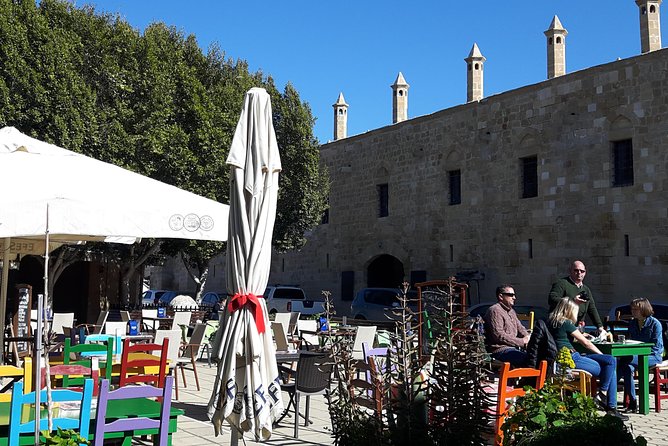
Spanning centuries, Nicosia’s architectural landscape bears the imprints of its diverse cultural influences, including the Ottoman, Venetian, and Lusignan eras that have each left an indelible mark on the city’s built environment.
The Ottomans, who ruled Cyprus from 1571 to 1878, constructed grand mosques, imposing citadels, and vibrant marketplaces that reflect their distinctive architectural style.
Meanwhile, the Venetians, who preceded the Ottomans, erected sturdy fortification walls and impressive structures that showcase their Renaissance aesthetic.
The Lusignans, a French royal dynasty that reigned over the island from the 12th to 15th centuries, also left their mark with elegant Gothic cathedrals and palatial residences.
Together, these diverse influences have created a rich tapestry of architectural heritage that defines the character of modern-day Nicosia.
Guided Tour Highlights and Inclusions
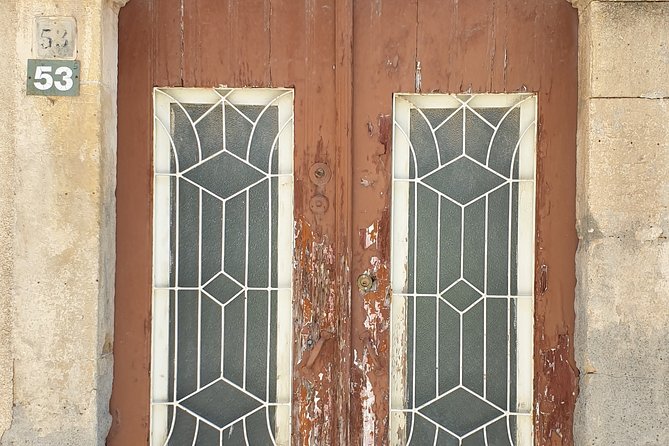
The guided tour of Nicosia promises a comprehensive exploration of the city’s rich history and cultural heritage, with a focus on its Ottoman, Venetian, Lusignan, and Byzantine influences.
The tour includes:
-
Bottled water, coffee, and tea to keep travelers hydrated and refreshed.
-
Professional guidance from dedicated experts who bring the city’s past to life.
-
Wheelchair and stroller accessibility, as well as infant seats, ensuring inclusivity.
-
Complimentary transportation within Nicosia, making it a hassle-free experience.
Travelers can look forward to a seamless journey, starting and ending at the Ledra Street border crossing.
With a 5.0 overall rating from 10 reviews, this tour offers an unparalleled opportunity to take in the captivating history of the divided capital.
Meeting Point and Transportation
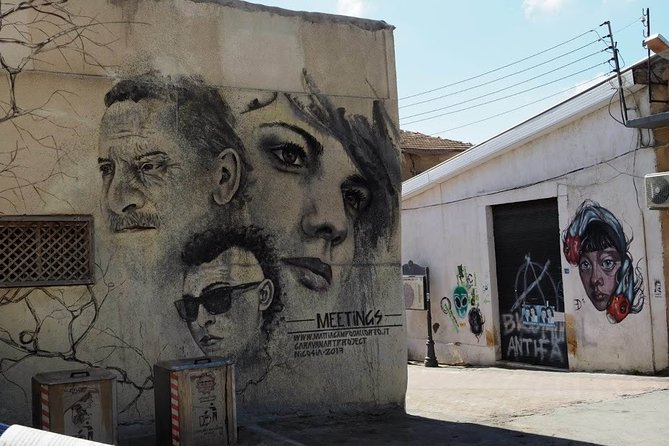
Meeting for the tour begins at the Ledra Street border crossing in central Nicosia, Cyprus.
Travelers must present valid passports when crossing the checkpoint. The tour ends back at the same meeting point, providing a seamless loop for the exploration of the divided capital.
During the tour, transportation is provided within Nicosia, allowing participants to efficiently navigate the city’s historical sites and neighborhoods.
The tour is accessible to those using wheelchairs or strollers, and infant seats are available, ensuring a comfortable experience for all.
With a focus on the city’s diverse Ottoman, Venetian, Lusignan, and Byzantine heritage, the guided tour offers a comprehensive and immersive glimpse into Nicosia’s fascinating past.
Important Tour Policies and Information
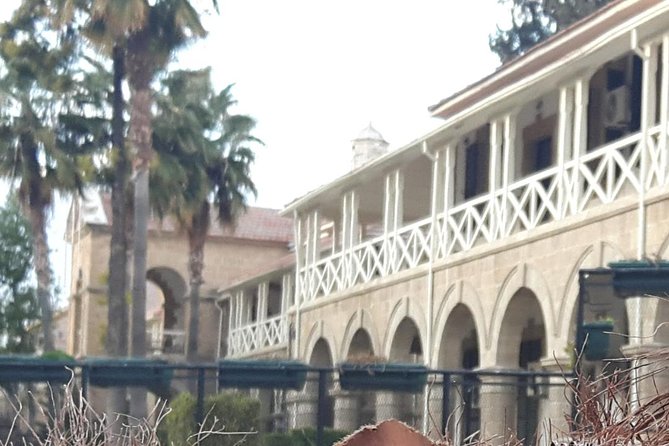
What’s more, the tour has several important policies and details that travelers should be aware of.
Children under 12 must be accompanied by parents, and lunch isn’t included in the tour package. Plus, the tour is non-refundable, with no refunds provided for cancellations. However, travelers will receive confirmation of their booking upon registration.
The tour also comes with the following inclusions:
- Bottled water
- Professional guidance
- Coffee and/or tea
- Wheelchair and stroller accessibility, as well as infant seats
Visitors should also note that valid passports are required to pass through the checkpoints during the tour of the divided capital.
Traveler Experiences and Feedback
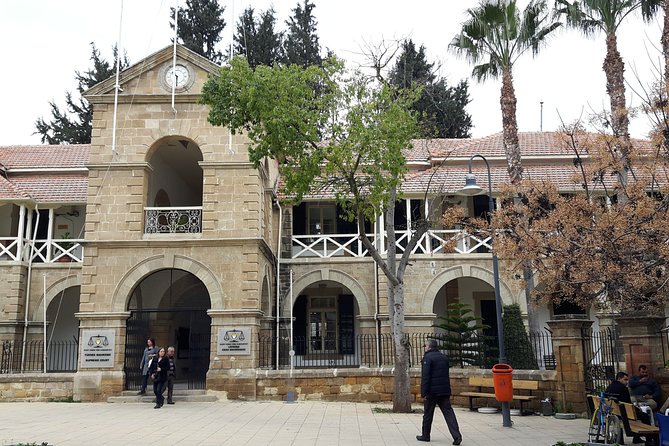
Travelers consistently praise the tour’s knowledgeable guides and accommodating staff, with many sharing their cultural insights and positive experiences.
One reviewer noted, ‘Our guide brought Nicosia’s history to life, skillfully weaving together the Ottoman, Venetian, Lusignan, and Byzantine influences.’
Another visitor commented, ‘The tour was a great way to explore the divided city and gain a deeper understanding of its complex past.’
Reviewers also highlighted the smooth logistics, with one person stating, ‘The transportation within Nicosia was seamless, and the included refreshments were a nice touch.’
Embracing the Duality of Nicosia
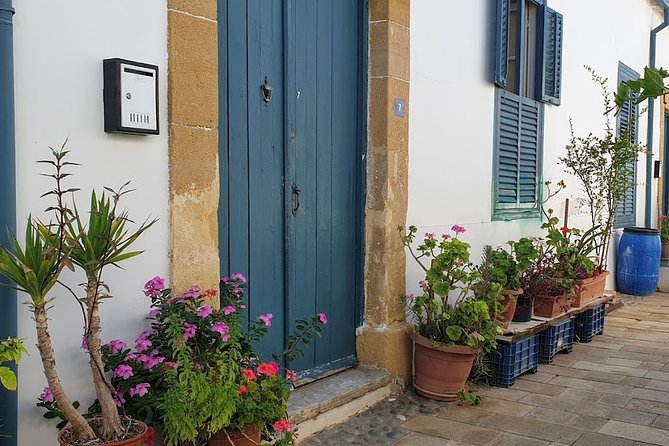
Nicosia, the divided capital of Cyprus, stands as a poignant reminder of the island’s tumultuous history, with its two distinct halves embodying the ongoing separation between the Greek Cypriot and Turkish Cypriot communities.
Yet, in this duality lies an opportunity to embrace the city’s unique character and explore its multifaceted identity. Visitors can:
-
Traverse the UN-patrolled Green Line, the physical divide separating the two communities, and gain first-hand insights into the complex political and social dynamics.
-
Discover the vibrant, yet contrasting, neighborhoods on either side of the divide, each with its own distinct architecture, culture, and way of life.
-
Engage with local residents, fostering cross-community dialogue and understanding.
-
Reflect on the city’s resilience and the enduring spirit of its people, who navigate the challenges of division with determination and hope.
Frequently Asked Questions
How Much Time Is Allotted for the Tour?
The tour doesn’t specify a set duration, but it’s a private tour with a dedicated guide and curated itinerary, allowing for flexibility to explore Nicosia’s Ottoman, Venetian, Lusignan, and Byzantine history and culture at a comfortable pace.
Are There Any Language Options Available for the Tour?
The tour is offered with English-speaking guides. Language options beyond English are not explicitly mentioned in the provided information. Customers should inquire about potential language availability when booking the tour.
Can the Tour Be Customized to Suit Individual Preferences?
The tour can be customized to suit individual preferences. The dedicated guide works with guests to curate the itinerary, focusing on areas of interest and providing a personalized experience within the parameters of the tour overview.
What Is the Maximum Group Size for the Private Tour?
The private tour of Nicosia has no set maximum group size. It’s a personalized experience, so the group size can be tailored to suit the traveler’s preferences. The dedicated guide will ensure a curated itinerary for the group, regardless of its size.
Are There Any Discounts or Special Offers Available for the Tour?
The tour information does not mention any discounts or special offers. It’s a private tour, so the price is likely fixed. However, the tour provider may offer promotions or deals at certain times, so it’s best to check their website or inquire directly.
Recap
Nicosia’s divided history is a compelling story of resilience and coexistence.
Visitors can explore the city’s rich cultural tapestry, traversing the Ledra Street border crossing and seeing the architectural marvels left by the Ottomans, Venetians, and Lusignans.
Though the city remains partitioned, its diverse communities continue to embrace the duality that defines Nicosia, offering a unique glimpse into Cyprus’ complex past and present.
More Tour Reviews in Nicosia
- PRIVATE KARPAZ TOUR From Nicosia
- Small Group Tour of Nicosia and Kyrenia From Nicosia
- Private Day Tour in Nicosia and Kyrenia (Nicosia/ Kyrenia Hotels)
- Troodos Walking Trip (Artemis +/Myllomeris Waterfalls) – Private From Nicosia
- The Best of Nicosia Walking Tour
- VIP Circular Nicosia Green Line Guide Tour Both Greek and Turkish Side
Not for you? Here's more things to do in Nicosia we have recnetly reviewed
- 2 Best Guided Tours In Nicosia
- Famagusta & Kyrenia Private Day as Circular Tour From Nicosia
- Half-Day Private Tour of Nicosia
- Discover Nicosia’S Most Photogenic Spots With a Local
- Intro to Xeros Potamos Valley & Vouni Panagias Walk (Private From Nicosia)
- 14 Best Tours In Nicosia
- Half Day Tour: St Hillarion and Bellapais From Nicosia
- Nicosia Private Bike Tours Day or Night
- PRIVATE KARPAZ TOUR From Nicosia
- Small Group Tour of Nicosia and Kyrenia From Nicosia
- Private Day Tour in Nicosia and Kyrenia (Nicosia/ Kyrenia Hotels)
- Troodos Walking Trip (Artemis +/Myllomeris Waterfalls) – Private From Nicosia
